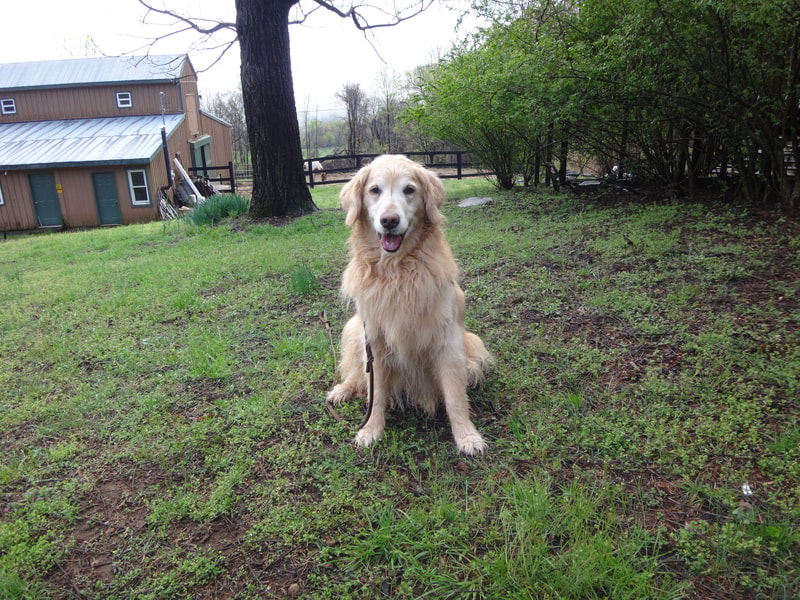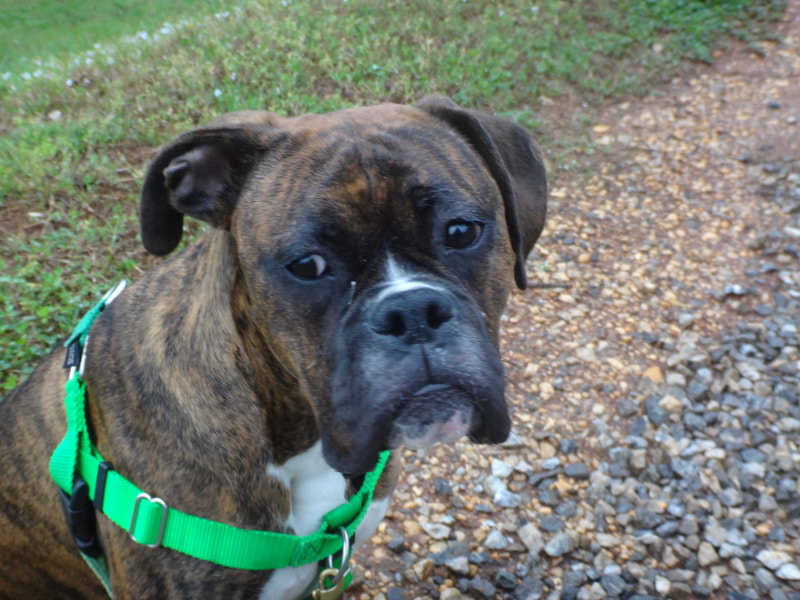At SMPR we use positive reinforcement training methods to teach our K9 guests how to learn. You may ask, How does this differ from other area trainers? I'm glad you asked! Greatly. First, let's put ourselves into their position. They don't understand our language, no matter how many times we repeat the words and use louder volumes. Second, if one is forced into a situation, one becomes increasingly recalcitrant about getting into that situation in the first place. Ever experience your dog running away instead of coming when called? Or, trying to hide when he/she sees his leash? This is your dog's reaction to being force trained, or otherwise not enjoying the process; for some reason.
In the past few years I have seen an incursion of electronic collar trainers enter our area. When I had first arrived, in 2005, I thought the biggest issue with training dogs in Central Virginia were the "tradition methods" using choke chains, prong collars and yanking on these collars when giving commands. Now I'm seeing e-collars being placed on puppies, gentle dog breeds, and others, who will react poorly to being taught in this manner. In my opinion, trainers who use these devices either don't know their craft very well, or are catering to pet parents who prefer frightened robot dogs to a happy companion.
It hurts my heart to see this. Golden Retrievers who are gentle, loving creatures are being zapped into submission. Young dogs who need guidance are being flooded with scary stimuli and then zapped if they don't immediately accept it.
I view dogs as eternal children. Members of our families, who never grow up and move away. They rely on us for everything. And we rely on them for company and comfort. Therefore, I always approach the training process as - Would I do this to my child? Think of this for a second. If your child were afraid of stepping on grass would you force him/her to stand there and then zap him/her every time he/she attempted to get off of it? Or, would you take one step at a time, rewarding your child for each fraction of success until he/she decides that the grass was a fun place to be?
This is how I approach the dog training process. Each success is rewarded until the entire behavior has been accomplished. For those who don't have time to wait for their dogs to accidentally do something you may want, you facilitate the success.
Setting your dog up to make the right decision is not force training. It is merely appealing to him using something motivational, such as food, a toy, or touch. Dogs crave rewards as much as we do. They will work hard for them. Using rewards as a form of bait does not mean you'll need to forever rely on the bait for your dog to perform. It can be phased out over time.
Training your dog using positive reinforcement may take longer, but you are building a relationship with your dog, not just treating him/her like a piece of furniture; or a robot. Dogs are sentient, emotional creatures who crave love, attention and rewarding experiences. I hope you will agree with me that a happy, well-behaved companion who has learned how to make the right choices far outweighs a frightened robot dog.
View the pictures below to see the facial expressions of a dog who is responding to a cue because it wants to vs one who is frightened not to.
In the past few years I have seen an incursion of electronic collar trainers enter our area. When I had first arrived, in 2005, I thought the biggest issue with training dogs in Central Virginia were the "tradition methods" using choke chains, prong collars and yanking on these collars when giving commands. Now I'm seeing e-collars being placed on puppies, gentle dog breeds, and others, who will react poorly to being taught in this manner. In my opinion, trainers who use these devices either don't know their craft very well, or are catering to pet parents who prefer frightened robot dogs to a happy companion.
It hurts my heart to see this. Golden Retrievers who are gentle, loving creatures are being zapped into submission. Young dogs who need guidance are being flooded with scary stimuli and then zapped if they don't immediately accept it.
I view dogs as eternal children. Members of our families, who never grow up and move away. They rely on us for everything. And we rely on them for company and comfort. Therefore, I always approach the training process as - Would I do this to my child? Think of this for a second. If your child were afraid of stepping on grass would you force him/her to stand there and then zap him/her every time he/she attempted to get off of it? Or, would you take one step at a time, rewarding your child for each fraction of success until he/she decides that the grass was a fun place to be?
This is how I approach the dog training process. Each success is rewarded until the entire behavior has been accomplished. For those who don't have time to wait for their dogs to accidentally do something you may want, you facilitate the success.
Setting your dog up to make the right decision is not force training. It is merely appealing to him using something motivational, such as food, a toy, or touch. Dogs crave rewards as much as we do. They will work hard for them. Using rewards as a form of bait does not mean you'll need to forever rely on the bait for your dog to perform. It can be phased out over time.
Training your dog using positive reinforcement may take longer, but you are building a relationship with your dog, not just treating him/her like a piece of furniture; or a robot. Dogs are sentient, emotional creatures who crave love, attention and rewarding experiences. I hope you will agree with me that a happy, well-behaved companion who has learned how to make the right choices far outweighs a frightened robot dog.
View the pictures below to see the facial expressions of a dog who is responding to a cue because it wants to vs one who is frightened not to.
The Golden Retriever on the left is a beloved family pet who learned how to respond to cues via positive reinforcement. Note her relaxed, happy expression. The dog on the right was trained by Off Leash K9, an e-collar training franchise spread throughout the east coast (and elsewhere, too, unfortunately). After being cued to sit, look at his face. He's tense, scared and holding himself low. It broke my heart when I saw him do this. He is such a lovely, sweet Boxer. I never again told him to sit. Instead, I lured him into position and after the few days he spent with me he started to enjoy going on walks again, instead of waiting to be zapped.
In conclusion, please think about how training affects your dog and the life you have together. Giving him a choice to respond correctly, and setting him up for success, will help him better understand his environment and be a happier, relaxed, family member.
In conclusion, please think about how training affects your dog and the life you have together. Giving him a choice to respond correctly, and setting him up for success, will help him better understand his environment and be a happier, relaxed, family member.


 RSS Feed
RSS Feed